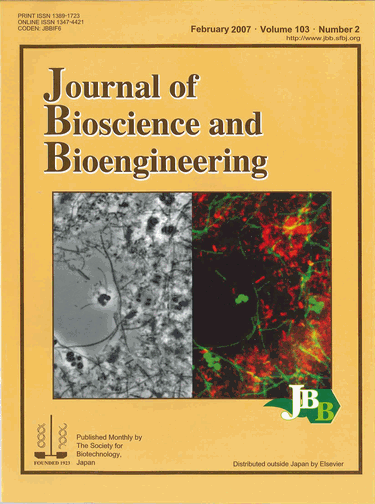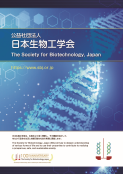Journal of Bioscience and Bioengineering Vol. 103, No. 2 (2007)
Vol. 103, February 2007
Fluorescence in situ hybridization (FISH) analysis of bacteria and archaea in chemostat.
Authors established a chemostat cultivation method for a mesophilic methanogenic consortium degrading long-chain fatty acids. Left panel shows a phase-contrast image of microorganisms in chemostat. Right panel shows bacteria (red) and archaea (green) visualized by FISH using archaeal- and bacterial-domain-specific probes. Authors detected the following major groups of methanogen within the archaeal community: the aceticlastic genera Methanosaeta and Methanosarcina and the hydrogenotrophic genus Methanospirillum.
Related article: Shigematsu, T., Tang, Y., Mizuno, Y., Kawaguchi, H., Morimura, S., and Kida, K., “Microbial diversity of mesophilic methanogenic consortium that can degrade long-chain fatty acids in chemostat cultivation“, J. Biosci. Bioeng., vol. 102, 535-544 (2006).
⇒JBBアーカイブ:Vol.107 (2009) ~最新号
⇒JBBアーカイブ:Vol. 93(2002)~Vol. 106(2008)



.gif)